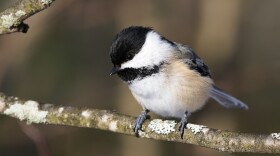-
Artificial intelligence could help scientists and state conservationists count waterfowl more quickly and accurately, according to a new study.
-
According to the Missouri Department of Conservation, August droughts will likely have an effect on when leaves change and drop.
-
The new book, "Sea of Grass," traces the history and future of the American prairie, laying out the stunning loss of grassland in North America and meeting the people fighting to bring it back.
-
Missouri's bear population is increasing, meaning humans will likely continue to encounter bears more often. Several were sighted recently in the Kansas City area, including near a Taco Bell in Grandview.
-
The competition will be held May 1-15, with the goal of raising awareness about protecting migratory birds in Missouri.
-
Dry conditions and high winds have led to wildfires across Missouri. So far, there have been no reported injuries, but structures and vehicles have burned.
-
A nesting pair of the protected birds have made their home in the Kansas City suburb. Blue Springs and the state conservation department have set up Missouri's only live feed for viewers to follow their journey to bird parenthood.
-
Missouri’s falconry hunting season opened February 11 for ducks, coots and mergansers, and light goose season began on February 7. Conservation experts say waterfowl can carry avian flu, and it's important to take proper precautions around wild birds.
-
The annual “Great Backyard Bird Count” asks people to track the birds they see and hear over a few days. The information can help researchers better understand bird populations and whether species are declining.
-
Hosted by the Kansas City District of the U.S. Army Corps, several upcoming Eagle Days events celebrate how man-made lakes helped reverse the decline of the bald eagle. The birds come through the Kansas City region every winter.
-
The University of Missouri Extension and the Department of Conservation are enlisting landowners to plant and care for white oak seedlings. The tree species is essential for wildlife and industry, but it's struggling under climate change.
-
Tests of geese found in Henry and Vernon counties showed probable avian influenza infections, prompting the Missouri Department of Conservation to warn people to avoid touching any dead waterfowl and report them for testing.
Play Live Radio
Next Up:
0:00
0:00
Available On Air Stations











